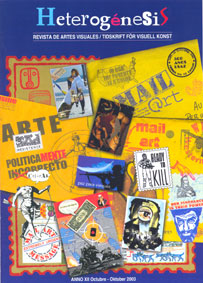 |
|
Funtastic United Nations: Vittore
Baroni (*) |
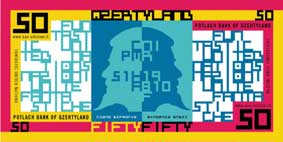 |
|
The history of mail
art, an international phenomenon grown out of the Sixties’ counter-cultural
turmoil and multi-media experimentations, has been closely intertwined
with the concept of Utopia (not the rock band), or the dream of an ideal
state (of mind, but also geographical) where people of all colours and
creeds could peacefully cooperate together in all sorts of projects.
That dream is often referred to as “The Eternal Network”:
a net of amity surmounting all racial and linguistic differences. Something
similar maybe to a kind of artistic “globalization”, but in
mail art creative differences and multiplicity of perspectives are naturally
encouraged, not destroyed and run over with a steamroller. We are all
equals but different as snowflakes, not drops of water. |
|
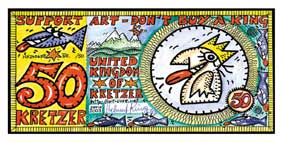 |
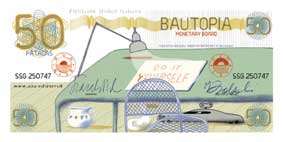 |
|
New tools come with pros and cons, just like a sharper (and more dangerous) knife. I personally love the Internet and the possibility of an almost instant communication with hundreds of friends on different continents, but I also believe that new and very strong concepts must be elaborated if we want to apply mail art strategies to the web. First of all, it will not be centered on the International Postal Systems anymore, so why don’t we stop calling it mail art? “Networking art”, for example, seems to be a more open and pertinent definition, inclusive of all the different expressive approaches: visual poetry, collage, audio art, conceptual, etc. In Internet you are not addressing a limited audience of pen pals, a more or less restricted circle of (amateur)artists well versed in the avantgarde traditions; you are addressing a much larger and heterogeneous audience. The kind of communication process involved is no more literally a one-to-one exchange, but a one-to-many interactive affair. One of the most pleasurable aspects of a mail art project is receiving a printed documentation in exchange for the work(s) donated for a show or event, something that simply cannot be replaced by an “online documentation”, always so boring and time-consuming to visit (with images slowly forming on the computer screen) that you seldom even care to download it or print it. In mail art you also enjoy meeting some of your long-time correspondents on the occasion of exhibitions and festivals: just try to do that in Internet with an unknown participant, and you may find yourself under police investigation for paedophilia, Pete Townshend style… A networking art project in the web must be able to have a life of its own, spreading like a virus well beyond the invitation>show>catalogue routine and exploiting all the new possibilities of the medium. We (purposely vague pronoun) tried this since the mid-Nineties with the “multiple name” Luther Blissett, an open project aimed at questioning consensus reality and exposing the media lies through the sharing of a collective (fictitious) identity. After promoting for a few years various actions in the name of LB - it is all over-documented in the web, just type “Luther+Blissett” in a good search engine and see what happens - we (this time just me, VB, and my old Trax-associate Piermario Ciani) decided in early 2001 that it was time to launch another collective concept, the pooling of energies being the pumping blood of any networking project, devoted to fictitious worlds instead of identities. F.U.N. (Funtastic United Nations) is an independent and supranational organization that intends to stimulate a cooperation amongst all kinds of imaginary countries and worlds, coordinating meetings, publications, exhibitions and events. We offer our skills and resources to create a bridge between creative and funtastic geographical entities, representing numberless and mutable virtual countries, multiethnical and transgender, where the passports, postage stamps and banknotes are real but not the wars. While our lives and habits are being standardized in the physical world by decisions taken by multinational corporations, and as we are forced to accept the New World Order imposed by those in power through a globalization of the consciences, we have at least the possibility to dream up and create our own imaginary lands, in the tradition of Samuel Butler’s Erewhon and Thomas More’s Utopia (again, not a rock band, even though Todd Rundgren did write in 1982 a credible utopian hymn, One World), just like many (mail) artists have done through the years, from George Maciunas’ Fluxus Island to Anna Banana’s Queendom of Banana, Harley’s Terra Candella, Dogfish’s Tui-Tui Islands, and so on. |
|
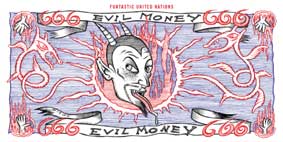 |
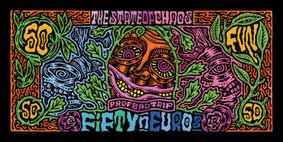 |
|
In less than three years, F.U.N. has indeed produced several publications, starting with a series of artistamps sheets by various authors and a special issue (n. 85) of my mail art magazine Arte Postale! on the theme “Just 4 F.U.N.? - Virtual Lands and Creative De-Globalization”, that included stamp works by over seventy international artists. This was followed in 2002 by the box Mail 4 Fun, a “survival kit” for mail artists in an increasingly computerized and impersonal world, with postcards, artistamps, rubberstamps and other curiosities from the imaginary worlds of twentytwo authors. Several exhibitions ensued, including the travelling artistamps show Philatelic FUN, with illustrated album-catalogue, and the inauguration of the Topolò F.U.N. Post Office, complete with nameplate, office workers and special philatelic cancellation stamp, as part of a festival in a small town near the Italian-Slovenian border. In November 2002 Enrico Michieletto activated at the European Social Forum in Florence the first movable NUF (Nuovo Ufficio Filatelico, “New Philatelic Office”), while in collaboration with the Bank of F.U.N. in June 2003 he organized on the occasion of the opening of the 50th Venice Art Biennial the performance Gondolla®, with real banknotes of imaginary countries being freely distributed in various spots of the lagoon town, against all forms of speculation or exploitative marketing of the artistical expression. The F.U.N. money, designed by twenty international artists (Larry Angelo, Helmut King, Tim Mancusi, Prof. Bad Trip, Reid Wood, Alexander Zograf, etc.) and collected in the limited edition portfolio Bank of F.U.N., cannot be used to buy armaments, art works or other goods, it is an art work in itself and it exerts a value only if traded or used on the territory of the Funtastic United Nations. F.U.N.’s vocation to interact in an horizontal “networking” attitude with local and distant, real and imaginary situations, to create unexpected interferences between art and daily life, is a strategy aimed at preserving the biodiversity of cultures and encouraging an eco-friendly, free and open participation to the creative experience. F.U.N. is the logic evolution of over twenty years of networking activities in the fields of mail art, of independent music (The Great Complotto, Le Forbici di Manitù), of collective multimedia projects (Trax), of multiple names (Lieutenant Murnau, Mind Invaders, Luther Blissett), of imaginary worlds and characters (Stickerman-Stickerland) and of counter-cultural documentation (various fanzines, AAA Editions). |
|
